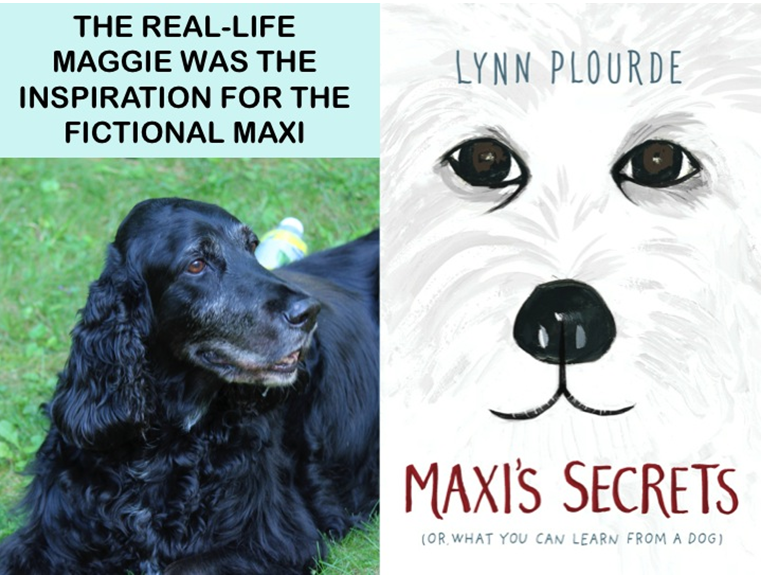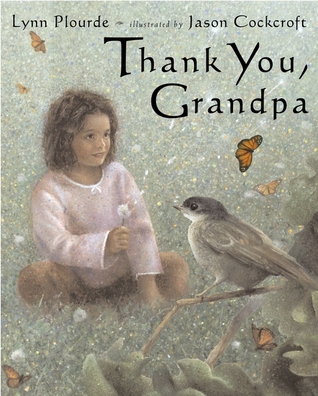 All independent bookstores with some years under their belts have developed special working relationships with at least a few nationally published local authors. Picture book author Lynn Plourde (Wild Child, Moose, of Course and many others) is certainly one of ours. Lynn is a hard-working author whom we have partnered with for school and store events many times over the last 20 years.
All independent bookstores with some years under their belts have developed special working relationships with at least a few nationally published local authors. Picture book author Lynn Plourde (Wild Child, Moose, of Course and many others) is certainly one of ours. Lynn is a hard-working author whom we have partnered with for school and store events many times over the last 20 years.
Taking me aside at a recent event, Lynn revealed that after 20 years of exclusively writing picture books she was very excited to have a middle grade novel in the works, Maxi’s Secrets, coming out in August from Nancy Paulsen Books at Penguin. There is a comfortable familiarity in these long-term working relationships, a kind of steady narrative flow that Lynn’s unexpected revelation abruptly upended. Happily upended, I may sa,y as It turned out that Lynn’s novel was an absolute delight, the story of a special dog who helped her young owner navigate some difficult transitions occasioned by his move to a new town. I thought it would be interesting to catch up with Lynn about her remarkably smooth late-career genre shift.
Kenny: Let’s start with the obvious question. After 20-plus years of writing picture books you’ve gone middle grade. This gives you a broader age range for school visits, of course, but you clearly had a longer story to tell. What led you to writing Maxi’s Secrets (or, What You Can Learn from a Dog)?
 Lynn: My beloved dog Maggie led me to writing Maxi’s Secrets. Maggie, our black Irish setter mix, had been with us for almost 14 years, and she was the best and silliest buddy a human could ever want. After Maggie was gone, I needed to write about her. She’d taught me so much about life being full of tail-wagging moments if only I’d pay attention. So I thought maybe I could do an advice-from-a-dog’s-point-of-view book! Nah—kind of corny. Or a picture book perhaps? Nah—not enough space for such a big story. Then how about middle grade? Ding-ding-woof-woof! The bells and the barks went off—that was it! My favorite books to read are middle grade realistic fiction. Plus writing a middle grade novel would give me enough space to tell a bigger, deeper story. I started with the “core truth” of Maggie’s life, but then I sprinkled on lots of make-believe—turned her into a deaf dog, changed her to a Great Pyrenees (since more white dogs are deaf), gave her a shrimpy boy for size contrast, and added a blind neighbor who wanted her own guide dog. But at the core of all of Maxi’s fiction were Maggie’s truths.
Lynn: My beloved dog Maggie led me to writing Maxi’s Secrets. Maggie, our black Irish setter mix, had been with us for almost 14 years, and she was the best and silliest buddy a human could ever want. After Maggie was gone, I needed to write about her. She’d taught me so much about life being full of tail-wagging moments if only I’d pay attention. So I thought maybe I could do an advice-from-a-dog’s-point-of-view book! Nah—kind of corny. Or a picture book perhaps? Nah—not enough space for such a big story. Then how about middle grade? Ding-ding-woof-woof! The bells and the barks went off—that was it! My favorite books to read are middle grade realistic fiction. Plus writing a middle grade novel would give me enough space to tell a bigger, deeper story. I started with the “core truth” of Maggie’s life, but then I sprinkled on lots of make-believe—turned her into a deaf dog, changed her to a Great Pyrenees (since more white dogs are deaf), gave her a shrimpy boy for size contrast, and added a blind neighbor who wanted her own guide dog. But at the core of all of Maxi’s fiction were Maggie’s truths.
Kenny: My favorite picture book of yours is Thank You, Grandpa, a book that deals with a child’s loss and conveying the meaning and impact of a person’s continued presence in memory. Maxi’s Secrets shares those same themes, and does a wonderful job doing so. I assume that is not a coincidence?
Lynn: First, readers of this Q&A need to know that we’re not sharing any spoilers for Maxi’s Secrets. The book begins with these lines: “Let’s get this part over with—it’s no secret. My dog, Maxi, dies.” So, yes, the dog dies in this book (but as its author, I promise as many laughs as tears).
 Kenny, your question implies I know what I’m doing when I write about loss. But the truth is—I don’t. When I write about death it’s because at an emotional level I need to as part of my own grief and healing journey. I want to honor someone special to me who has passed (in Thank You, Grandpa, it was several grandparents; in Breathe, an unpublished YA manuscript, it was my dad; in Maxi’s Secrets, it was our dog Maggie). I want to understand how I can “go on” when that special someone is not physically with me anymore. There’s a saying: “Death ends a life, but not a relationship.” That’s true, but HOW does that relationship transform? I’m still figuring it out.
Kenny, your question implies I know what I’m doing when I write about loss. But the truth is—I don’t. When I write about death it’s because at an emotional level I need to as part of my own grief and healing journey. I want to honor someone special to me who has passed (in Thank You, Grandpa, it was several grandparents; in Breathe, an unpublished YA manuscript, it was my dad; in Maxi’s Secrets, it was our dog Maggie). I want to understand how I can “go on” when that special someone is not physically with me anymore. There’s a saying: “Death ends a life, but not a relationship.” That’s true, but HOW does that relationship transform? I’m still figuring it out.
But I do believe that as a society we are too quick to look away, to move on when someone we love dies. We feel we have to look away because it hurts too much. Death scares us. Our turn is coming. But if we lean into our grief and learn from it, I think we’ll grow and understand this whole life-death journey better. For example, in Thank You, Grandpa, I shared the lesson I learned—that when someone we love dies, we say “good-bye,” but we should also say “thank you for being the only one of your kind in the universe—ever!” In Maxi’s Secrets, I learned that our feelings are close together in our hearts, in our brains, in our memories—the love, the tears, the laughter—and we need to acknowledge and allow room for all those feelings. Part of grieving someone is celebrating that someone as well. If we avoid dealing with death, we not only miss the grieving, but the celebration too, and carrying forward the gifts that our loved one gave us.
Kenny: Was there anything that surprised you on the process side of switching genres?
Lynn: Process fascinates me, and I’ve learned that it is as individual as the clothes we wear and the way we season our foods. When I told other authors I was working on a middle grade novel, I received lots of advice—mostly along the lines to bust through the first draft, tell things out of order, leave blanks, vomit on paper, and then clean it all up later. But that’s not how I work and maybe it’s because I’ve written picture books for so many years. I wrote one sentence of my novel and read it aloud, then I wrote the next sentence and read both sentences aloud, then a third, and so on. That sounds crazy with a 250-page book, but I read it aloud over and over again to “listen” to it and see if the voice felt right, if the words played a little music to my ears. I’ve heard from people who’ve read advance reading copies of Maxi’s Secrets and they’ve said it would make a great read aloud—which pleases me and makes me wonder if all my reading aloud somehow helped.
 In another way, the process of writing middle grade was the same for me as writing picture books. I always write too long, always. Then I have to go back and cut things by a quarter or a third. I know that about myself as an author so I don’t let it upset me. I’d rather have too much and go back and cut things than to have too little and have to add things. But, um, for middle grade—that meant cutting 13,000 words! Thank goodness my editor, Nancy Paulsen, was the best book guide showing me how to sculpt, not machete away all those words.
In another way, the process of writing middle grade was the same for me as writing picture books. I always write too long, always. Then I have to go back and cut things by a quarter or a third. I know that about myself as an author so I don’t let it upset me. I’d rather have too much and go back and cut things than to have too little and have to add things. But, um, for middle grade—that meant cutting 13,000 words! Thank goodness my editor, Nancy Paulsen, was the best book guide showing me how to sculpt, not machete away all those words.
Kenny: Do you see Maxi’s Secrets fitting in with classic canine tearjerkers like Where the Red Fern Grows and Old Yeller, despite having a very different setting?
Lynn: Readers will have to decide where Maxi’s Secrets fits on their canine book lists; that’s not up to me. But I hope it isn’t only a tearjerker for them. I hope they’ll laugh, mull the secrets at the end of each chapter, think about the theme of “fitting in”—whether you’re too short, too big, deaf, blind, different in any way. It’s a book about fitting in and friendship as much as it is a book about loss.
Kenny: Thanks, Lynn!
Lynn: Thank you, Kenny, for giving Maxi a woof out to the world.
The Secrets Behind ‘Maxi’s Secrets’
Kenny Brechner - July 28, 2016
Leave a reply
